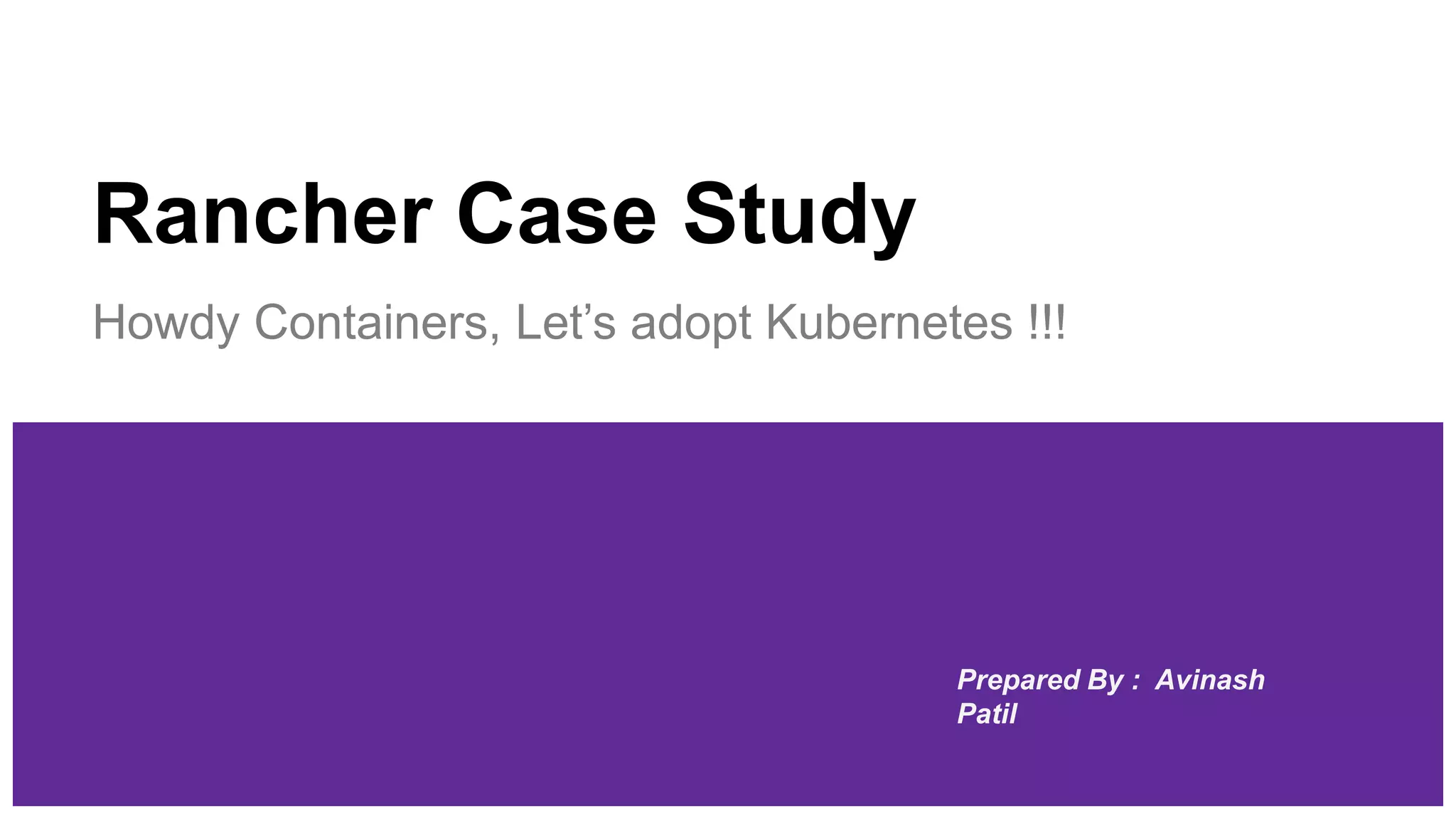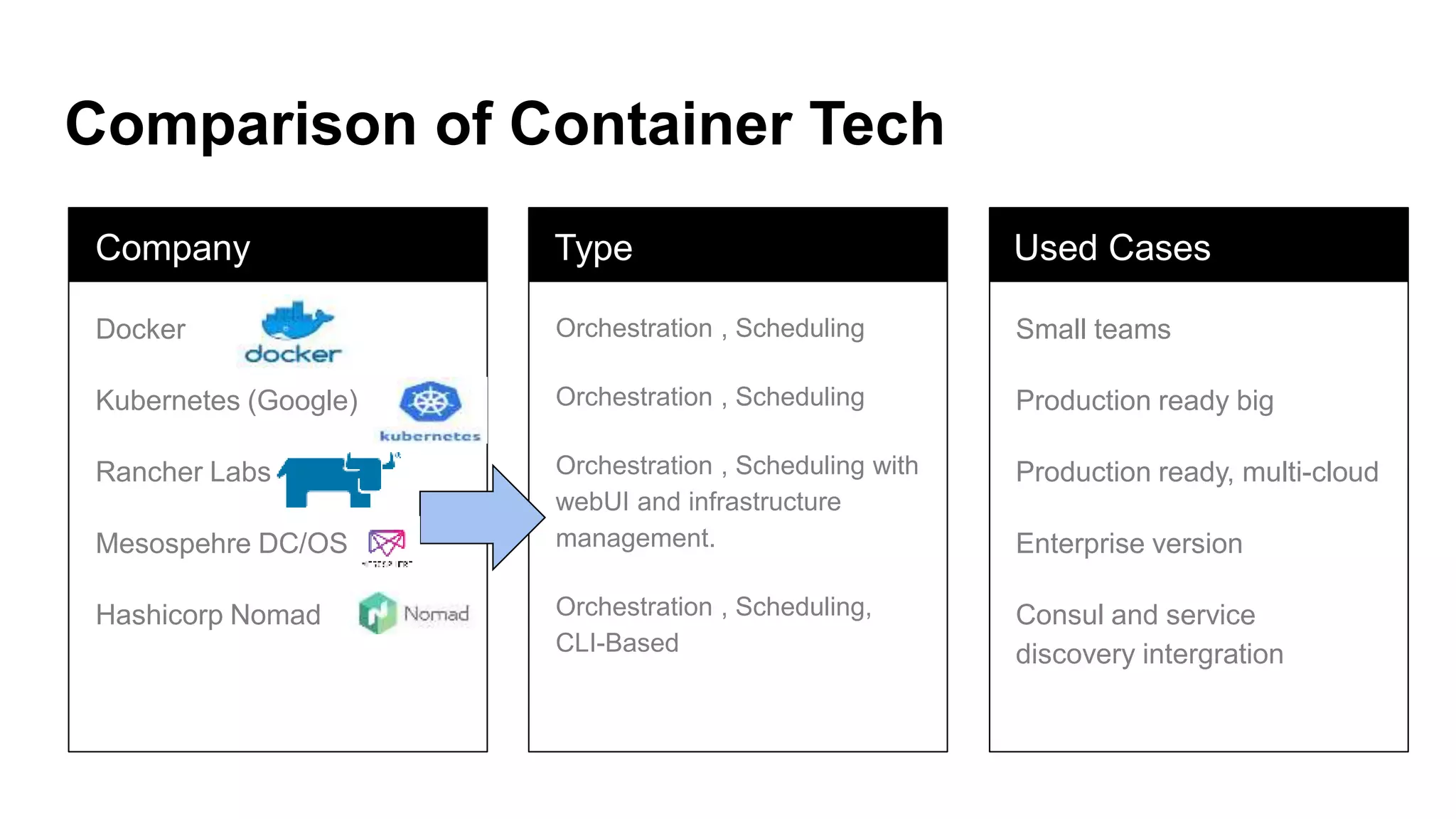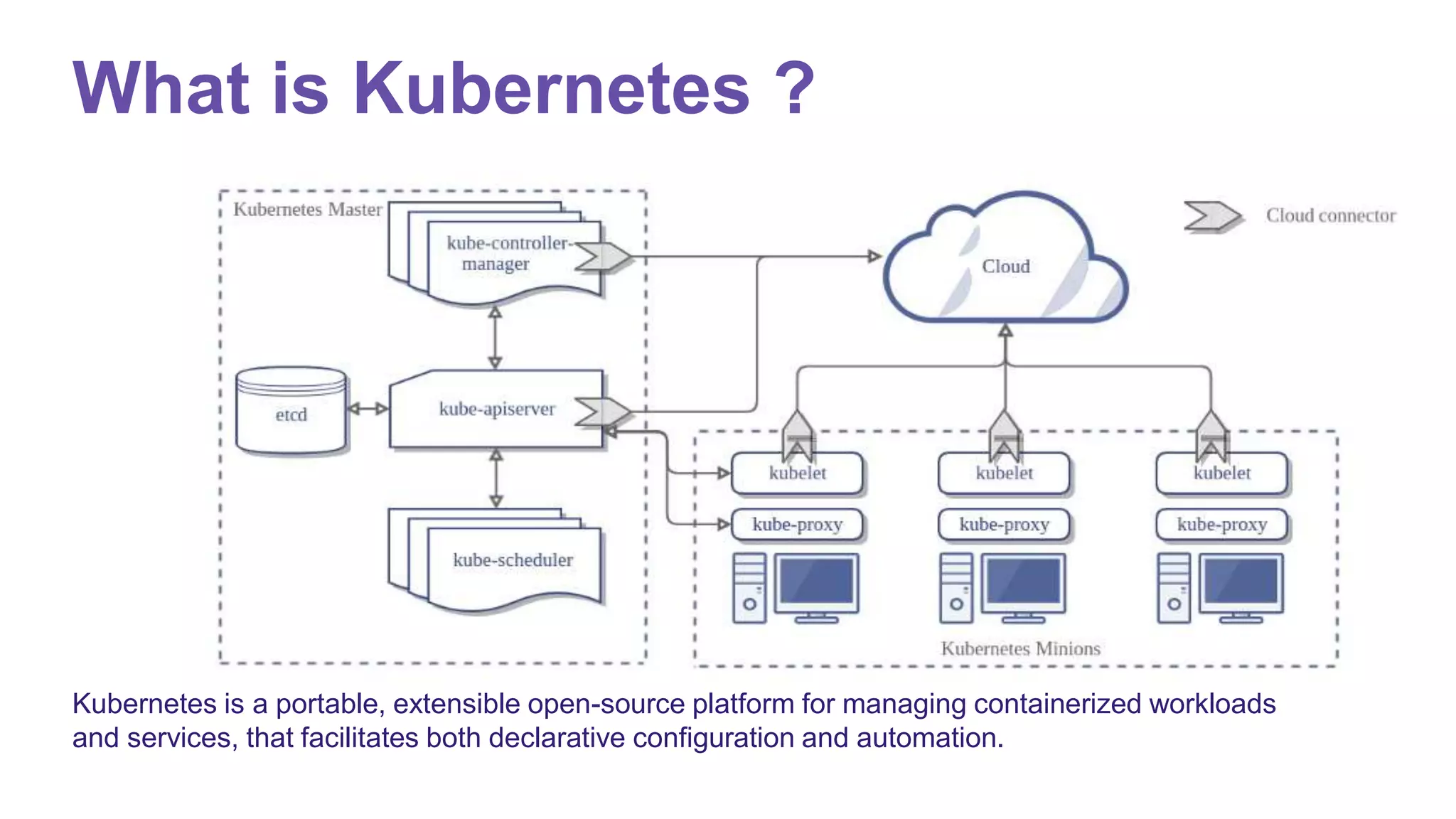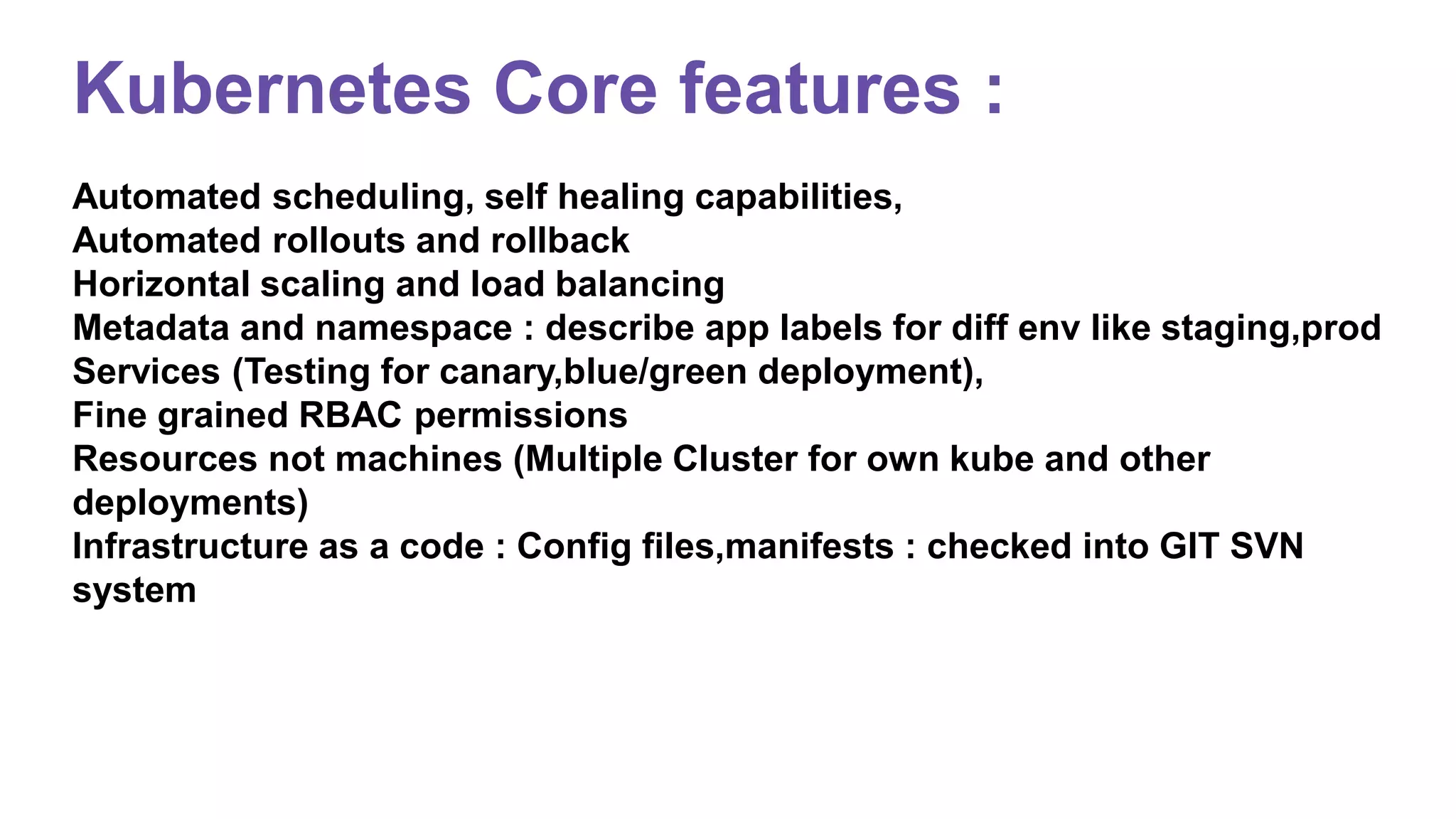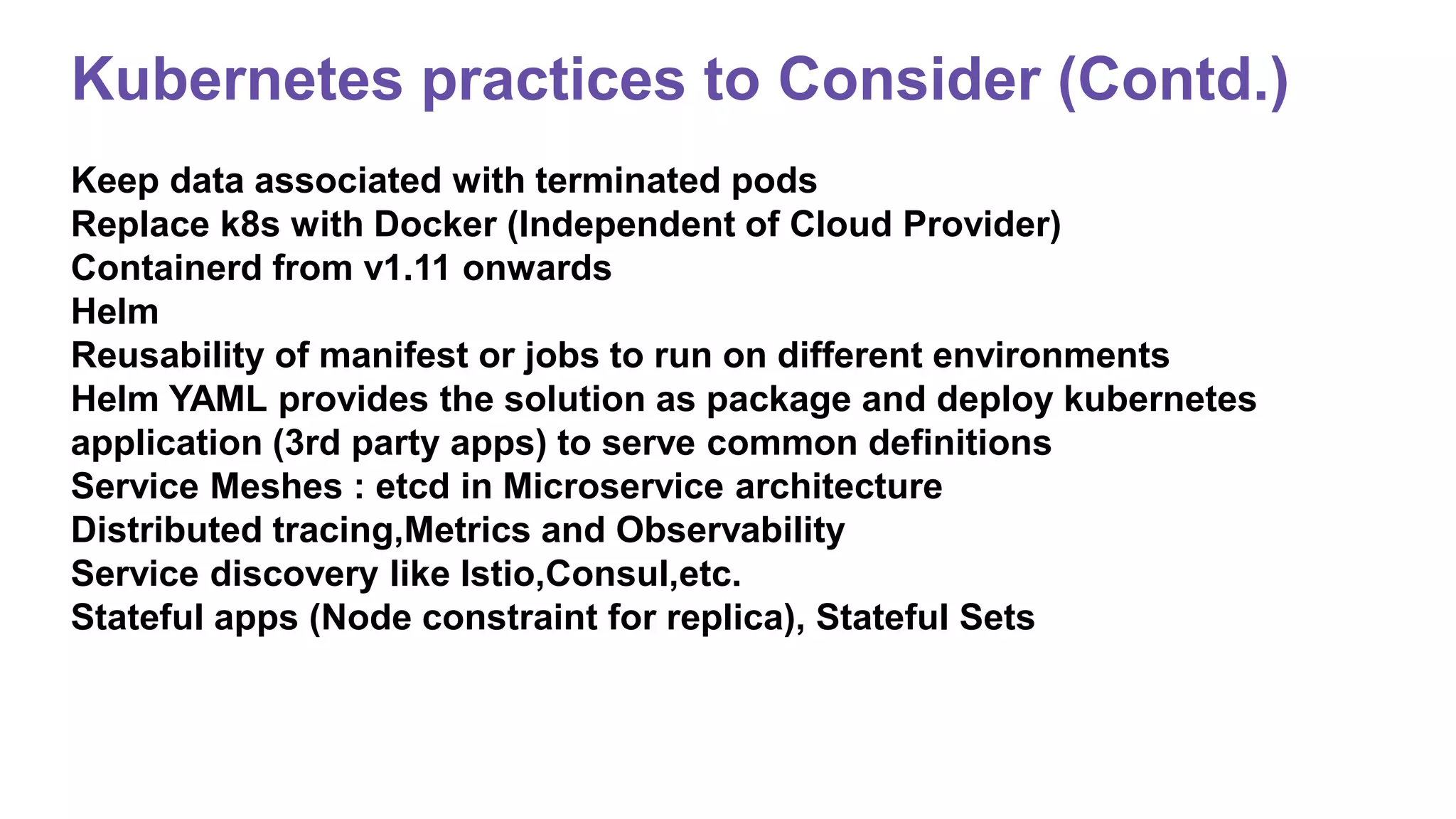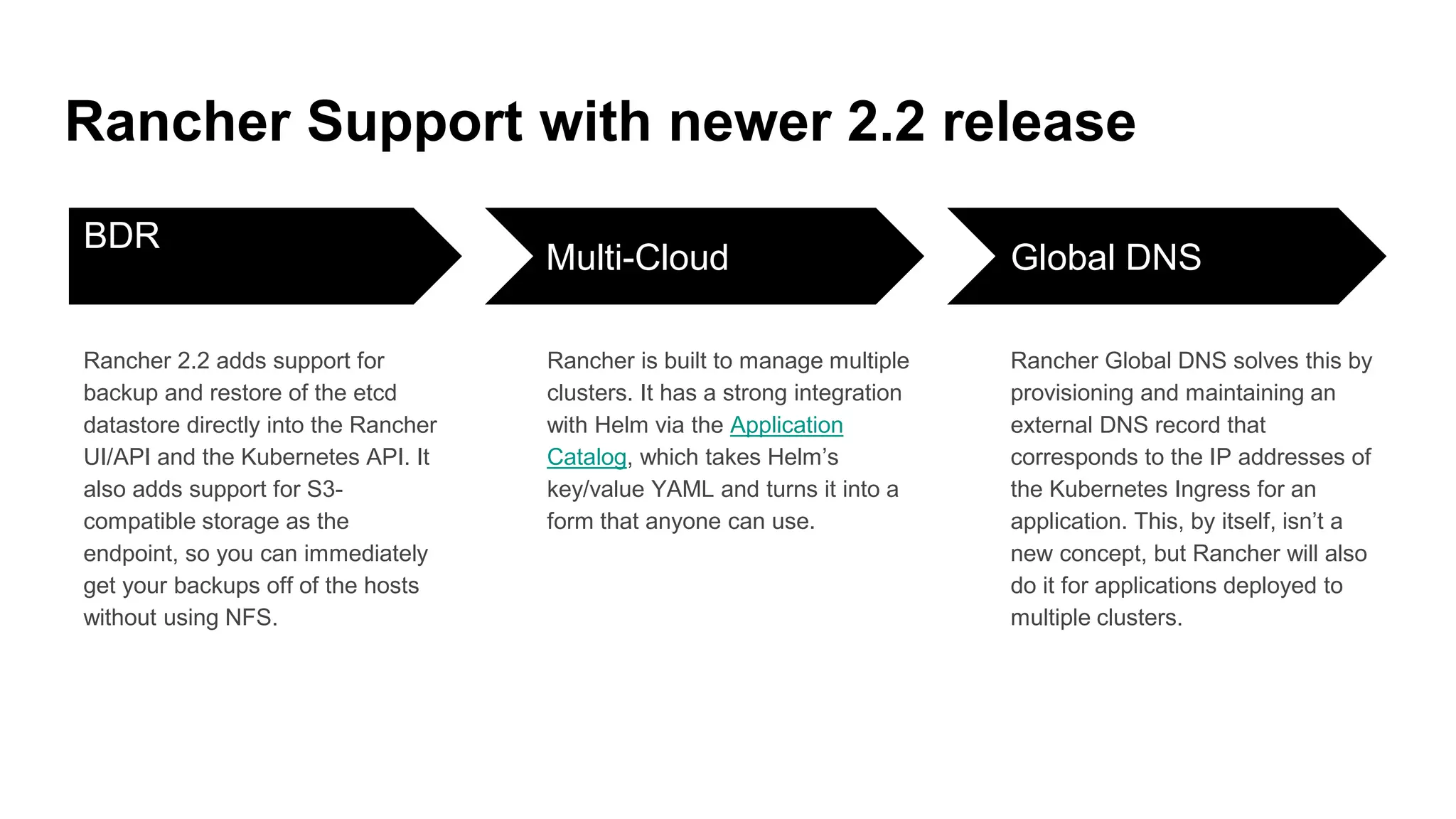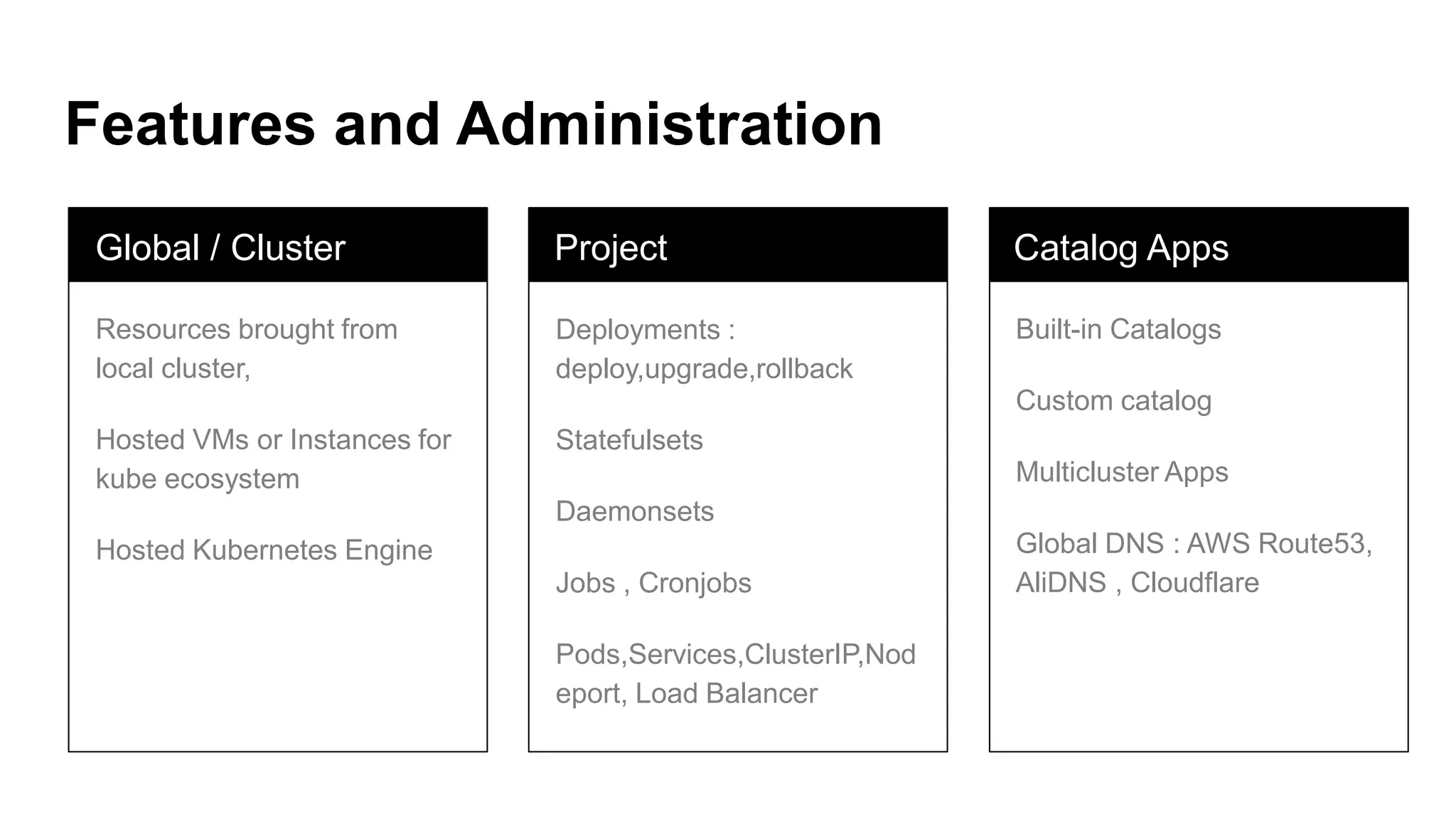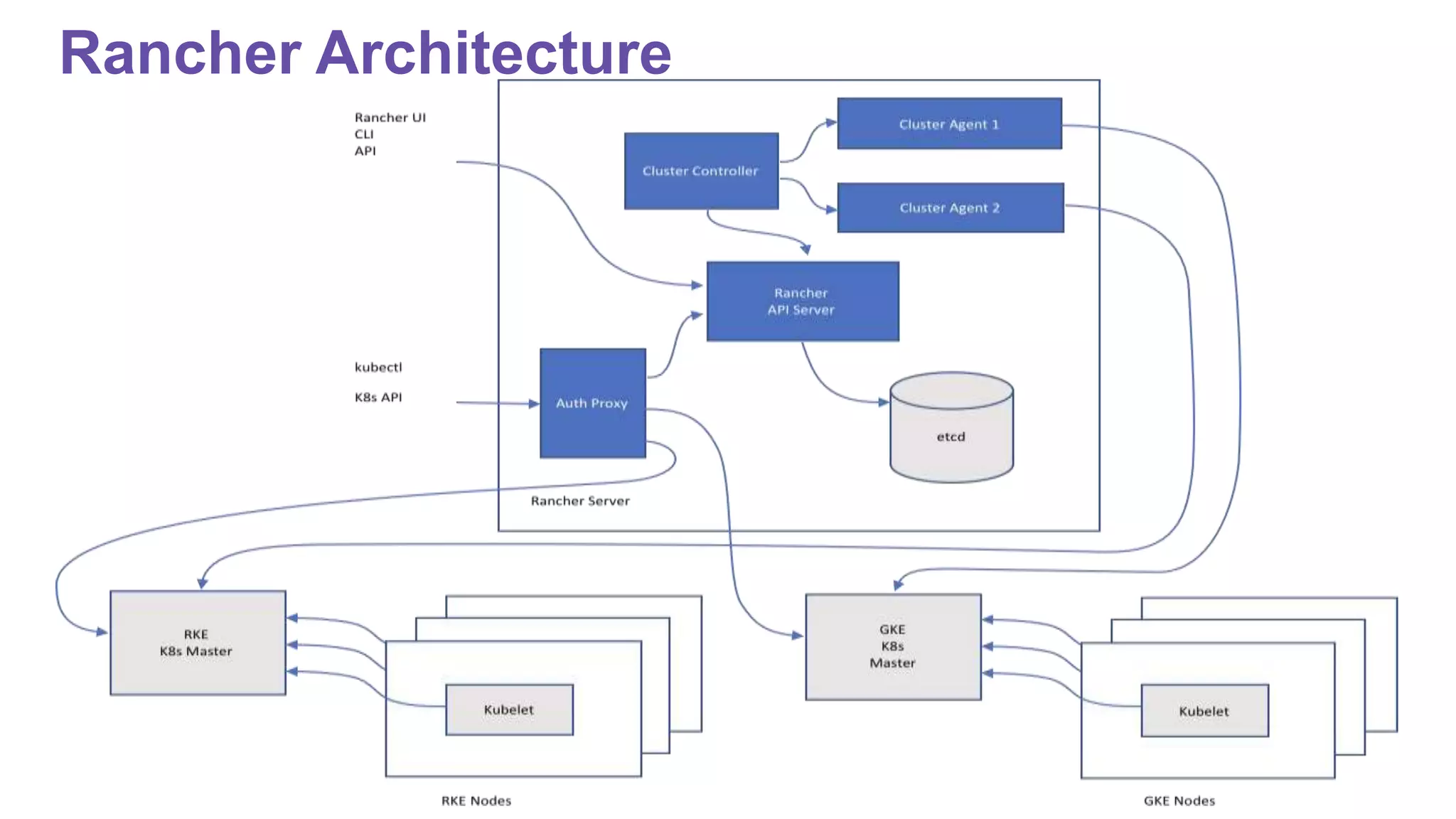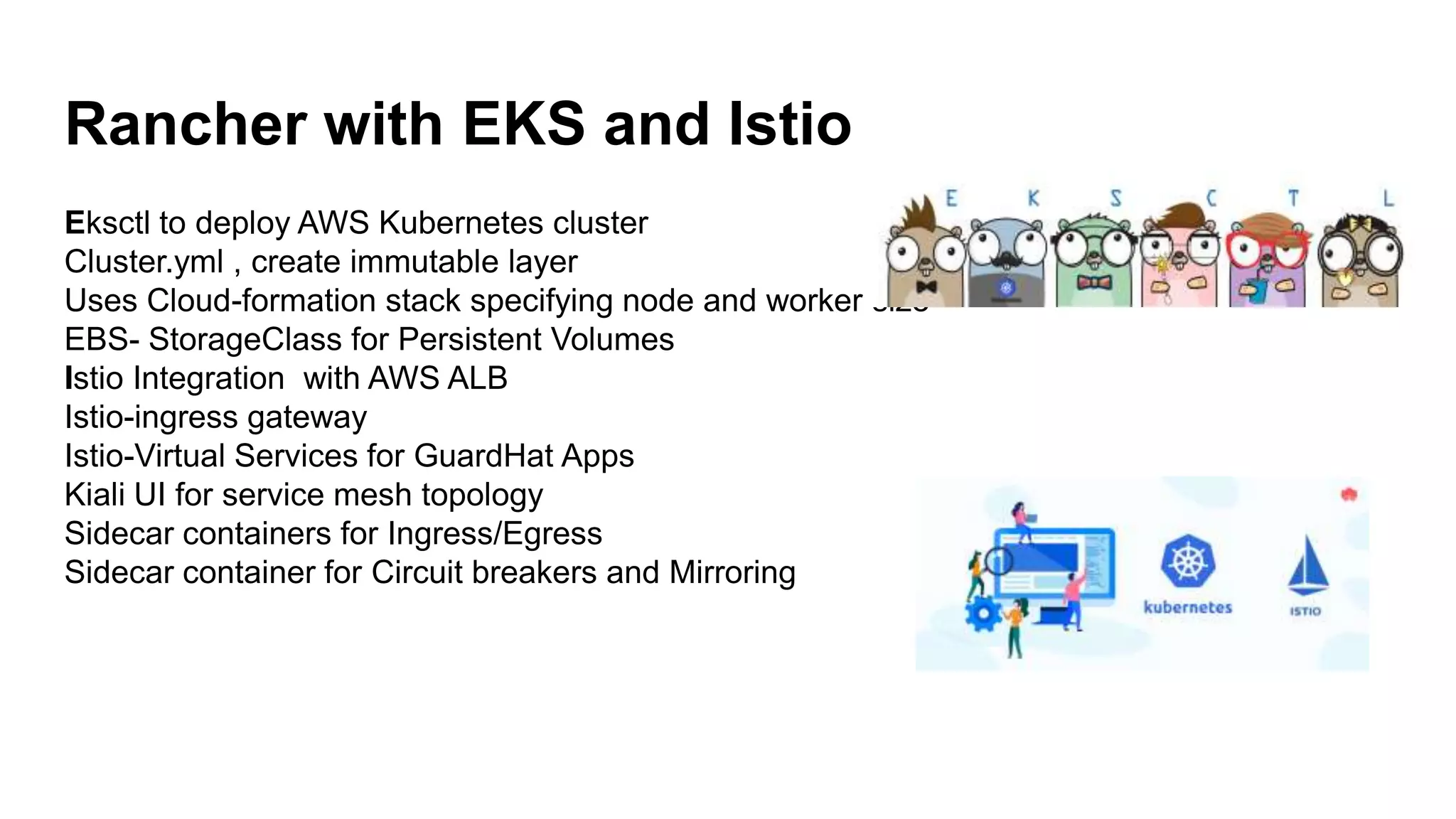Kubernetes is an open-source platform for managing containerized workloads and services that provides capabilities like scheduling, self-healing, rollouts and rollbacks. Rancher Labs provides Rancher, which is an orchestration and management tool that adds features like multi-cloud support, global load balancing, backup/restore and a catalog for deploying applications on Kubernetes clusters. The document discusses Kubernetes concepts and practices and how Rancher extends Kubernetes with additional capabilities through its web UI and integration with tools like Helm, Istio and AWS.
